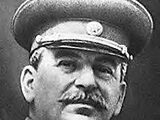This is the parent category Heads of State of Germany. Articles should go into one or more of the subcategories, not here.
The head of state of Germany has changed at various times since the unification of the German Empire in 1871. The first head of state was the German Emperor (Kaiser). After the Germany Empire collapsed, the Weimar Republic was formed, with the Reichspräsident ("President of Germany" in English) replacing the emperor as the German head of state. While the intent was that the presidency would share power with the chancellor and the Reichstag, the instability of the Republic resulted in a very powerful presidency.
In 1933, Adolf Hitler attained the office of chancellor (the head of government). Upon the death of President Paul von Hindenburg in 1934, Hitler also assumed the office of head of state, changing the title from "President" to "Führer". This title died with Hitler; he was succeeded by Karl Dönitz in 1945, who temporarily served as president before the government was dismantled by the Allied Forces at the close of World War II in Europe.
The postwar split of Germany saw two "lines" of heads of state. West Germany continued on as a federal republic, and reinstated the office of the president (officially Bundespräsident) with very limited and largely ceremonial powers and duties. From 1948 to 1990, East Germany was a communist republic. The initial head of state was the president (Staatspräsident), but in 1960, that office was replaced by a State Council. The head of the council, usually the general secretary of the Socialist Unity Party, was the office in which most power was vested. This office went defunct after reunification, and the President of the Federal Republic of Germany remains the title of head of state.
-

Second Great War -

Great War (Southern Victory) -

The Race -

Freedom Party -

Barrel -

Inconsistencies in Turtledove's Work -

Joseph Stalin -

Japan
All items (3)